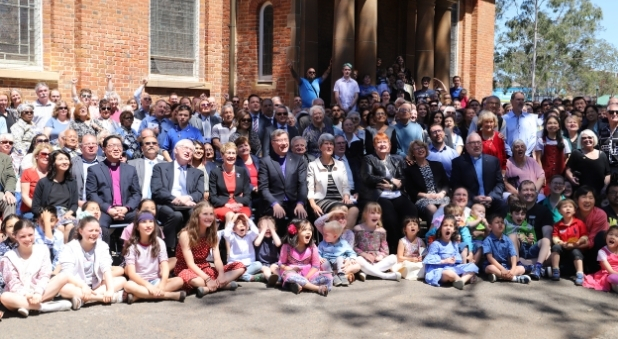The “Aerotropolis” growing around Western Sydney Airport, now under construction, is one of the main reasons for a revamp of ministry regions – which will see some parishes jump from one region to another.
The Sydney Diocese was divided into five regions in the mid-1990s: North Sydney, South Sydney, Western Sydney, Wollongong and Georges River, with a bishop leading each region.
More recently, the bishops had raised concerns that regional boundaries were based on the demographics of Sydney 30 years ago and so were out of kilter with current trends.
Some of the anomalies included the parish of Campbelltown being included in the Wollongong Region, which stretches south to Ulladulla, and areas like Castle Hill being included in the Western, rather than Northern, region.
Significant city restructuring ahead
The Bishop of Wollongong, Peter Hayward, delivered a report to Standing Committee on behalf of the Archbishop and other bishops in February, recommending a regional realignment to mirror city planning.
“At a minimum, the current regional boundaries will not keep track of the city’s significant restructuring over the next 40 years into three major city hubs: Western Parkland City, Central River City and Eastern Harbour City, known as the three-city metropolis model,” the report said.
“The NSW Government is massively increasing infrastructure spending in pursuing the three city hubs that will change how Greater Sydney functions over the coming decades.”
Western Parkland City refers to the region centred around the Aerotropolis and Central River City to Greater Parramatta, while Eastern Harbour City refers to the area surrounding Sydney Harbour. Under the current system, the northern boundary of the Wollongong Region includes the proposed Aerotropolis around the new airport at Badgerys Creek.
In writing to clergy last month, Archbishop Davies said despite being in the final weeks of his term, he had decided to act on the proposal.
“Change for change’s sake is not the purpose of this exercise – rather it is to enable us to be more effective in our mission”
He said the many months of preparation and examination of the demographic changes Greater Sydney will experience in the coming decades had received a positive response from rectors.
“In particular, given the projected population growth in Greater Metropolitan Sydney and the NSW Government’s commitment to a three-city metropolis of Harbour City/River City/Parkland City – in association with the burgeoning population growth of the Aerotropolis, which will surround the new Western Sydney (Nancy-Bird Walton) Airport – it has become obvious that the current regional boundaries do not adequately reflect the population spread away from the eastern seaboard,” Dr Davies said.
“It is now projected that by 2030, a mere nine years away, more than 50 per cent of Sydney’s projected population of 5.8 million will be living west of Parramatta. Of the 1.3 million new people living in Greater Sydney by 2030, two-thirds will settle beyond Parramatta.”
Parishes on the move
The Archbishop said the consultations with parishes had encouraged him to set July 1 as the date to introduce the changes, allowing time for the issues to be explained and for the new Archbishop to make any amendments.
There will be no outward changes to parish life, only a reclassification of region for some parishes and a different bishop providing oversight.
Under the plans, five parishes in the Hills – Castle Hill, Glenhaven, Dural, Cherrybrook and West Pennant Hills – will move from the Western to the Northern region. Seven parishes will move from the Georges River Region into South Sydney: Sans Souci, Kogarah, Brighton-Rockdale, Bayside, Marrickville, Earlwood and Canterbury.
Thirteen parishes from the Macarthur Mission Area will move from the Wollongong Region to Georges River. They are Camden, Campbelltown, Cobbitty, Denham Court, Eagle Vale, Ingleburn, Menangle, Minto, Narellan, Oran Park, Rosemeadow, South Creek and The Oaks.
Along with the region changes, the regional bishops are considering changes to the configuration of local Mission Areas because some are too large to be effective.
“Change for change’s sake is not the purpose of this exercise – rather it is to enable us to be more effective in our mission,” the Archbishop said.
“Change often brings anxiety, but I trust you will see the wisdom of these changes so that we might more effectively reach the population of Greater Sydney with the gospel, as we seek to see Christ honoured as Lord and Saviour in every community.”

















